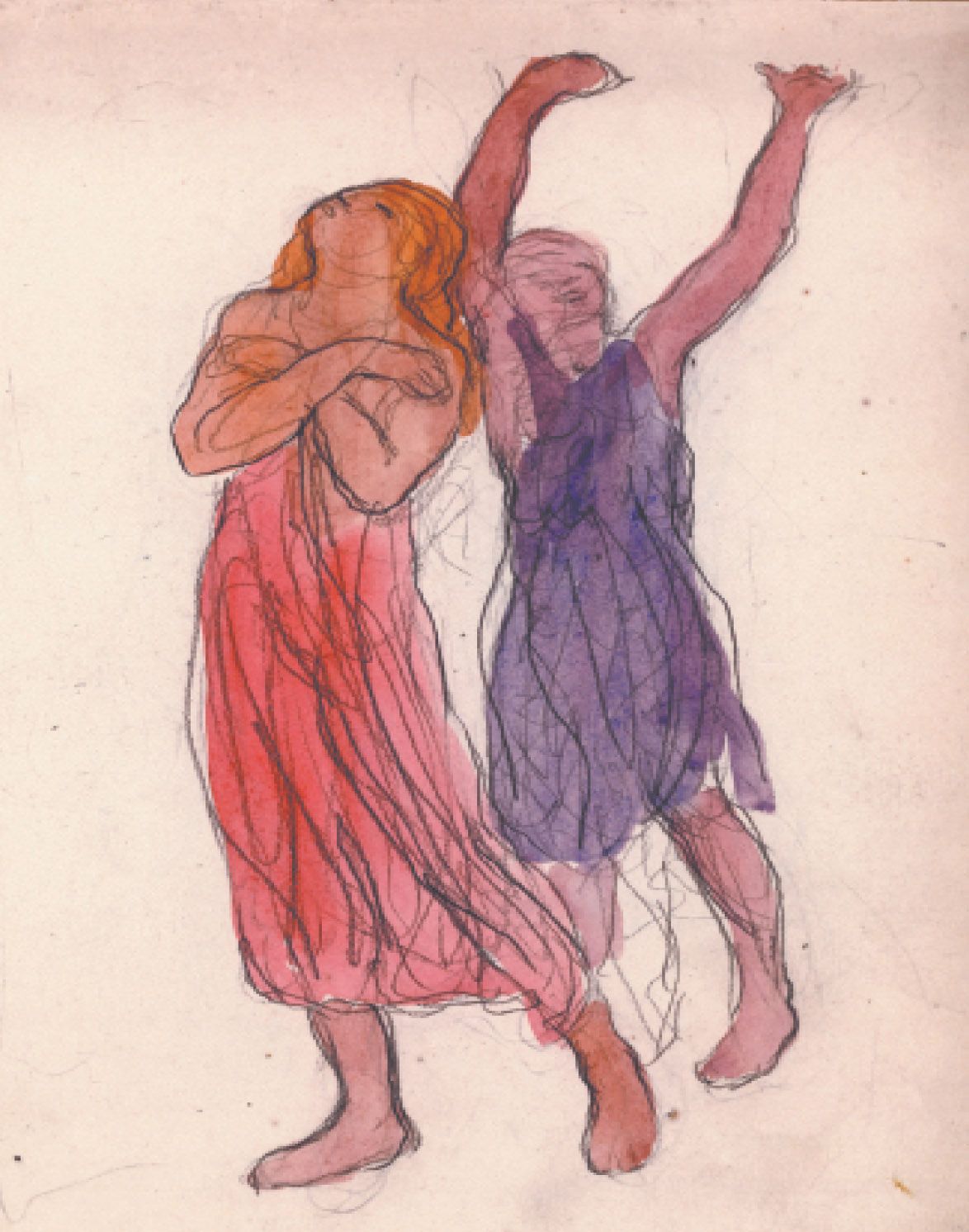‘Rare Sketches’ by The Arab Shakespeare
‘The Mask of Life,’ by Gibran Khalil Gibran. 1914. Rare sketches courtesy of the Gibran National Committee.
From the book, 'The Prophet.'
And through words like these written by Gibran Khalil Gibran, he became timeless himself, forever known as the Arab Shakespeare.
Here, these rare images and pages, courtesy of the Gibran National Committee, capture the sketches, the scribbles and the written words of the great Gibran.
‘The Mask of Life,’ dated to 1914 —is it a sketch of an arrogant, confident youth looking towards the future, and the aged old self next to it, somber with tired, closed eyes? What do you see when you look at it?
What a privilege to see what thoughts came and went, scratched off by one of the world’s most famous Arab poets, writers and philosophers. He is less known for his deep, intricate drawings, paintings and sketches, many of which honor women like his mother, and celebrate the beauty of the body as a spiritual being rather than that of a limited flesh with an expiry date.
Gibran would sketch and paint the people in his life, some known, some unknown, keeping them alive forever on a piece of paper or canvas. Perhaps one of his most famous sketches or drawings, depending on how you look at it, as it is not clear if it is complete, is that of ‘The Face of Al-Mustafa.’ Published on the cover of Gibran’s most famous international best seller book, The Prophet, as well as the chosen logo of the Gibran National Committee (GNC).
There were debates about whether Al-Mustafa is a self-portrait by Gibran, and whether in fact, many of the faces he drew were self-portraits of his different moods and stages of life.
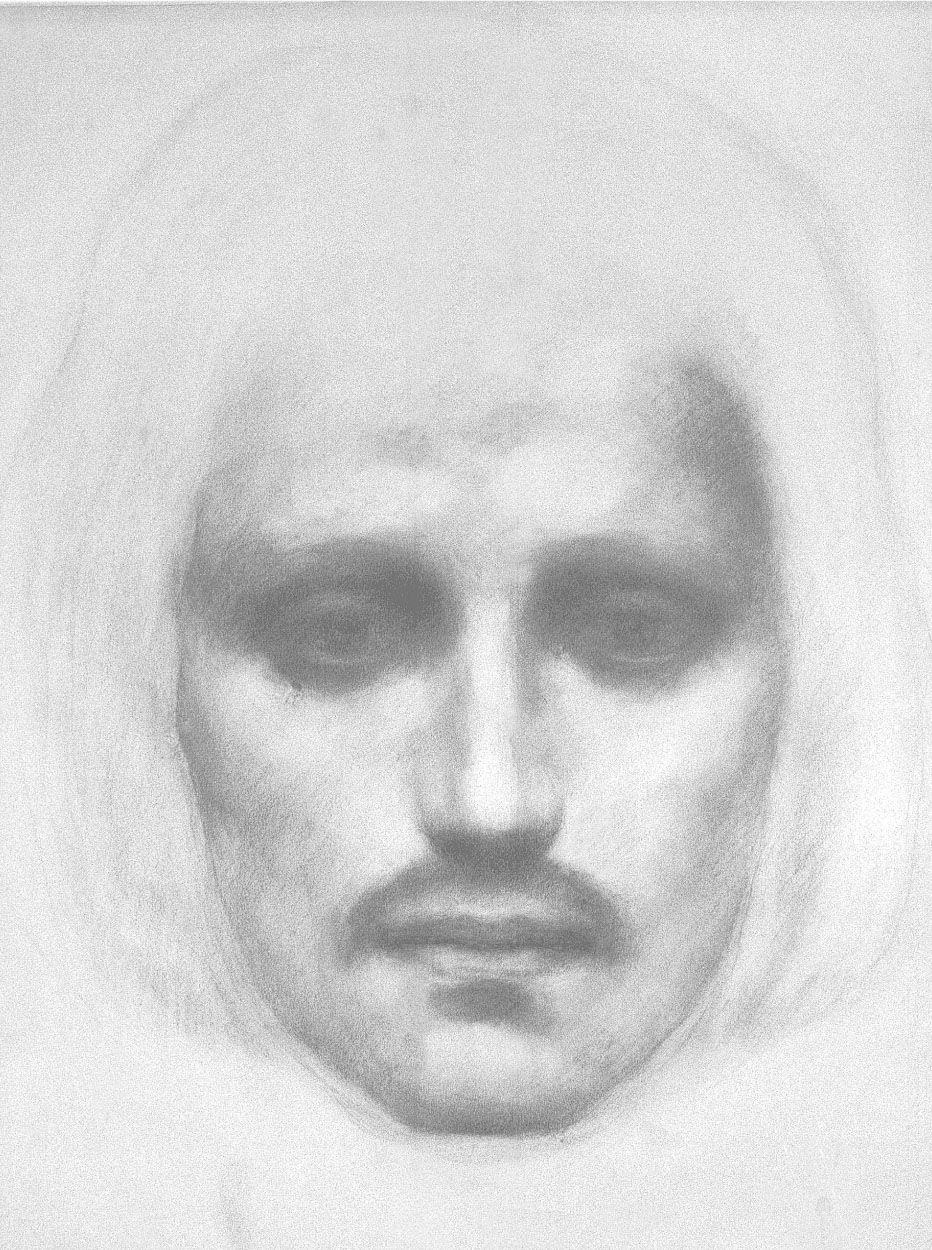
The Face of Al-Mustafa. The original painting was drawn in 1923. It is a charcoal painting measuring 47x33.4 cm and signed lower right K.G. It is exhibited at The Gibran Museum as well as published on the cover of Gibran’s most famous international best seller book, 'The Prophet.'
Following his death in 1931, the treasures found in Gibran’s studio were tossed about and unorganized. But the combined efforts of Mary Haskell, his benefactress, the Gibran Youth Committee and his friends, Gibran’s legacy was shipped in 1932 from his studio in New York to Bsharri, his native hometown in Lebanon, along with his personal belongings. The shipments documents form a part of Gibran’s legacy, as well as his furniture, his personal belongings, his private library, his manuscripts and 440 original paintings. Today, these items form the content of the Gibran museum and are overseen by GNC. The committee is a nonprofit organization formed by virtue of Decree No. 1618 dated July 10, 1934. The GNC holds the exclusive rights to manage Gibran’s items.
The sketches shown here are just a small peek into the great mind and talent of Gibran. The Gibran museum is worth a visit for anyone who wants to know more about the legendary figure, and the art left behind.
They have one of Gibran’s watercolor sets, that includes some brushes, watercolor tubes, and a pencil. The pigments may be dry with the passage of years, but the colors live on, unfaded on Gibran’s artworks.
Poetic inspirations, some melancholic, some exhilarating, can be read in the sketches made by him on school notebooks and other types of notebooks.
“Trees are poems the earth writes upon the sky, We fell them down and turn them into paper, That we may record our emptiness,” said Gibran. Looking through his pages, if indeed he felt he was recording his emptiness, then we can say he turned the expression of emptiness into an art.

One of Gibran’s watercolor sets. It was shipped along with his other belongings from his studio in New York to Lebanon in 1932. It is includes some brushes, watercolor tubes, and a pencil.
Courtesy of the Gibran National Committee.
A special thank you to Hoda Zohrob and the Gibran National Committee for their dedication to Gibran and their support in this project with Ithraeyat.
Please enjoy discovering these few pages as I have, introducing a moment of pause into your day. Dating to around 1908, they are Gibran’s scribbles on a notebook while he was in France.
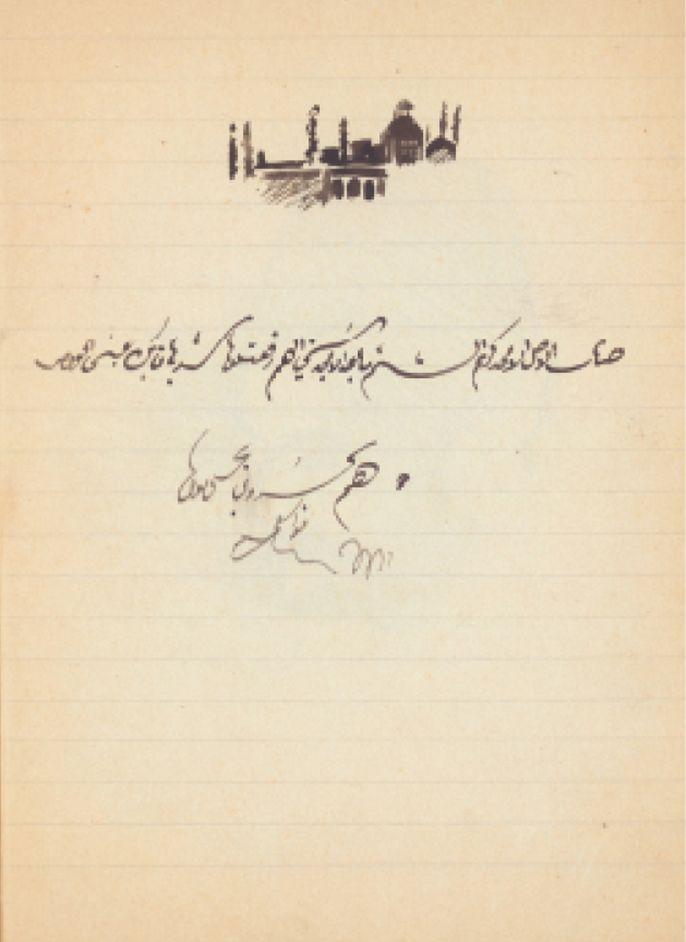
An arabesque manuscript written by Gibran Khalil Gibran. Gibran enjoyed different decorative styles of arabesque writings, one of them is reflected here that was then a popular typewriter style. 1908. This manuscript is part of the archive of the Gibran National Committee.

What Gibran sketched and wrote for his tomb -
“I am alive like you, and I am standing beside you. Close your eyes, and look around, you will see me in front of you…” This manuscript, hanging at Gibran’s grave at his museum in Lebanon, is printed on cedar plank. 1908. This manuscript by Gibran is part of the archives of the Gibran National Committee.
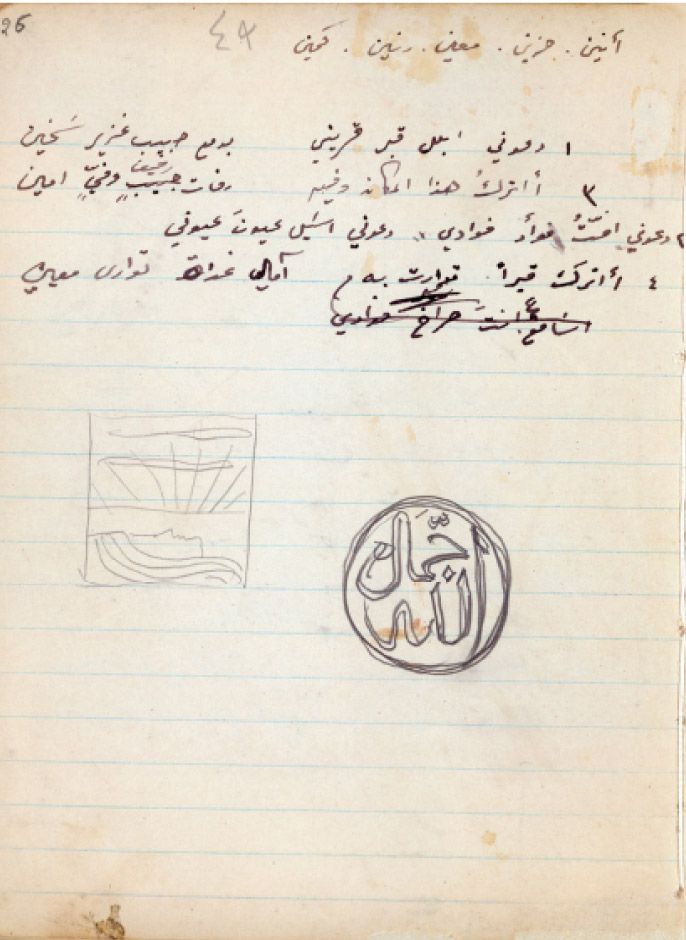
Poetic manuscript, and a sketch by Gibran. 1908. The manuscript is part of the archives of the Gibran National Committee.
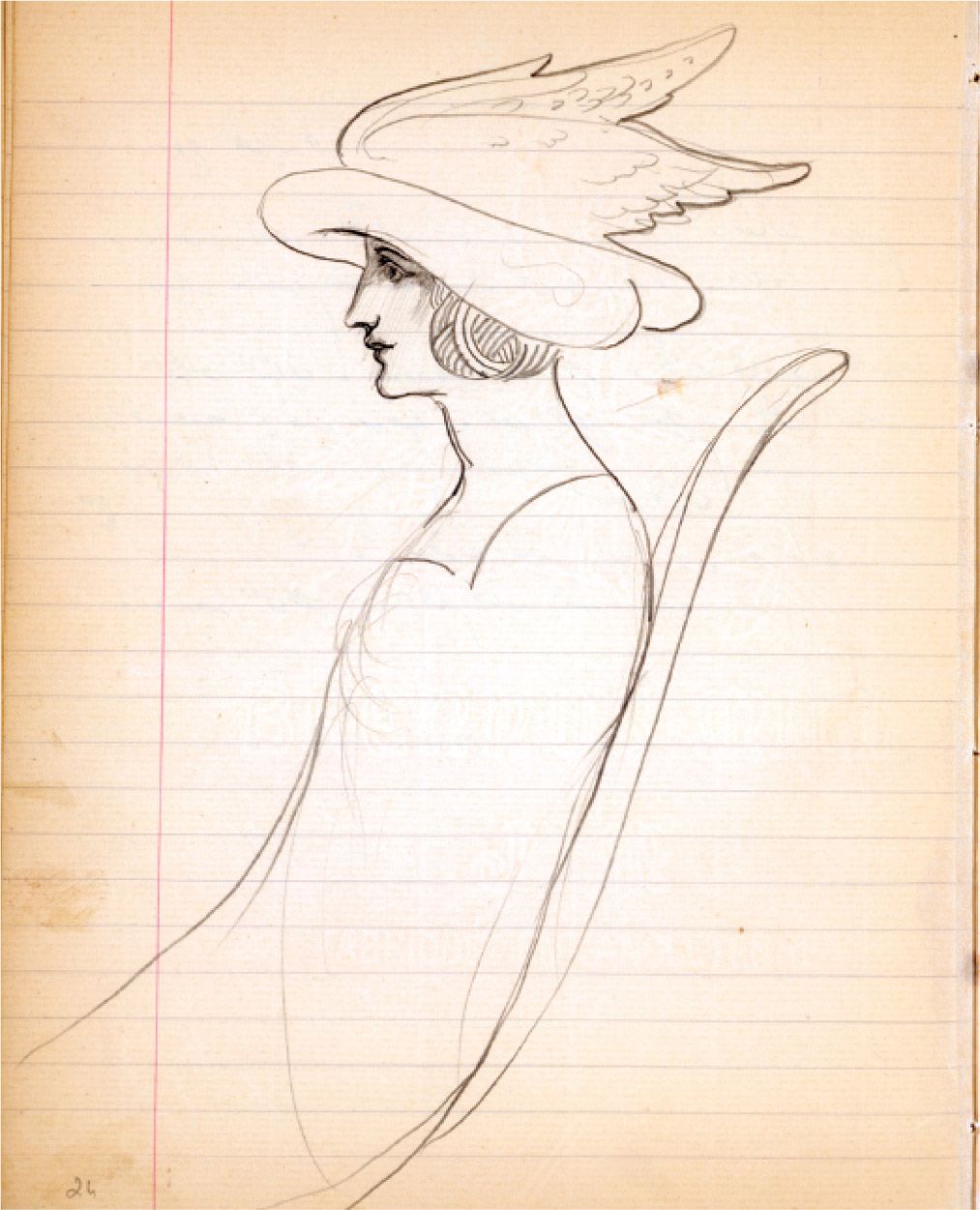
'The woman in a hat.' Women occupied a big part of Gibran’s life, with his mother at the fore and at the heart of many of his writings and art. 1908. The manuscript by Gibran is part of the archives of the Gibran National Committee.
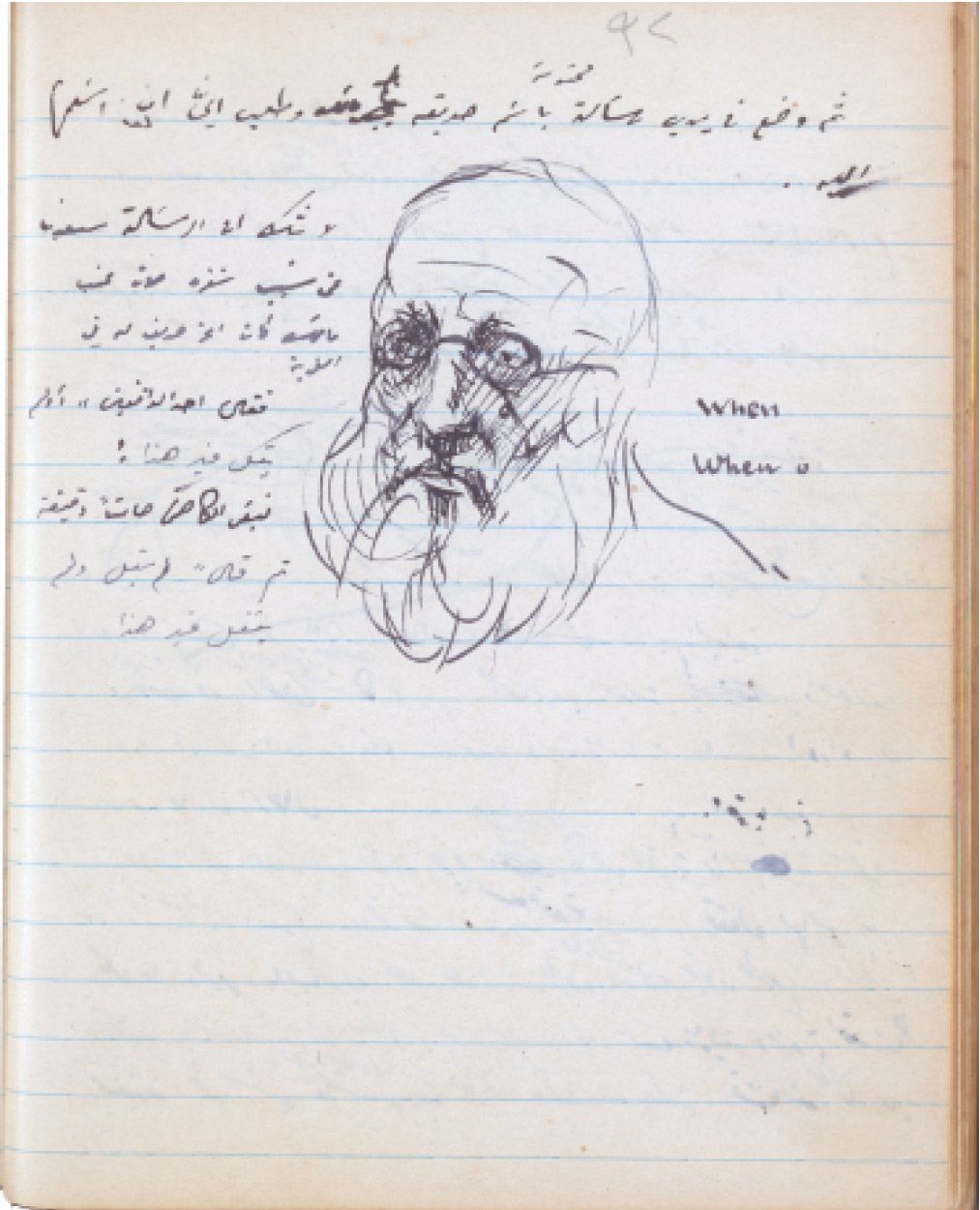
A big collection of Gibran's paintings and sketches were of faces of his friends and famous figures of his time. This manuscript from 1908 possibly captures one of his acquaintances. The manuscript by Gibran is part of the archives of the Gibran National Committee.
